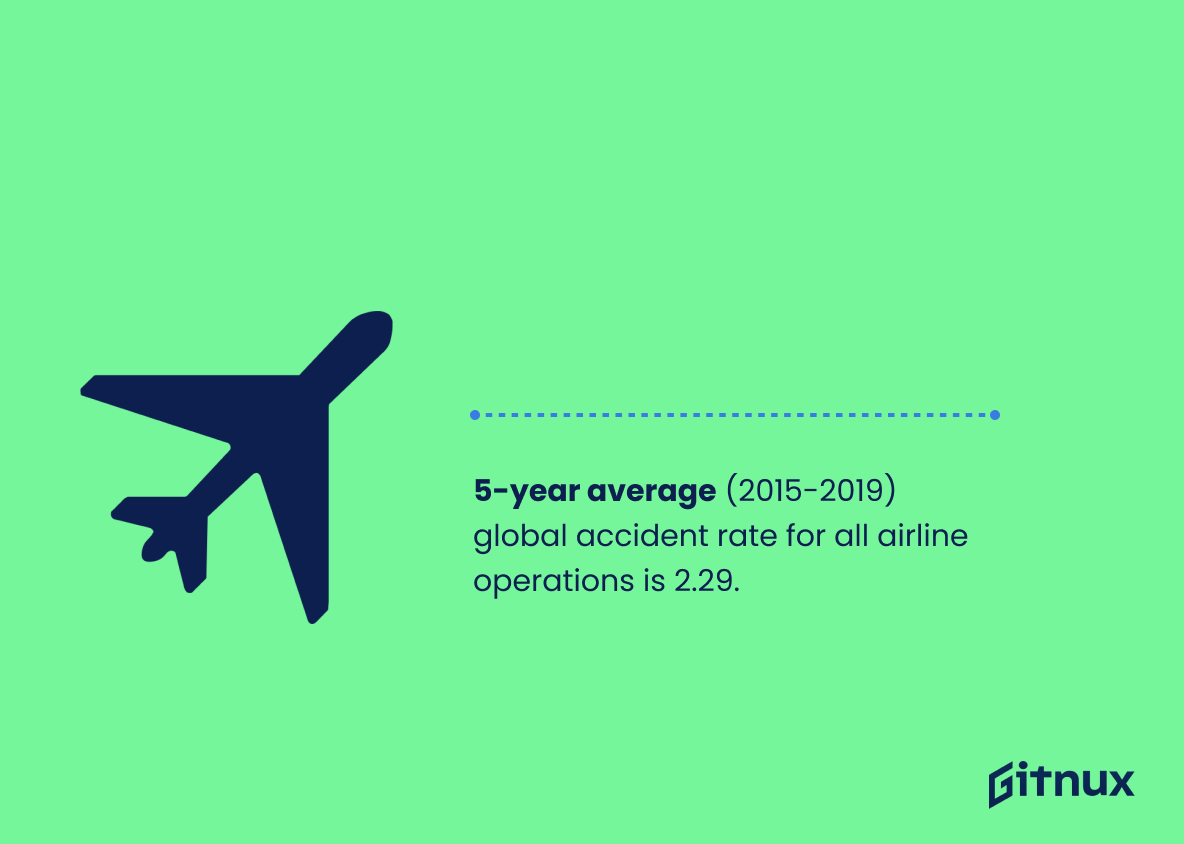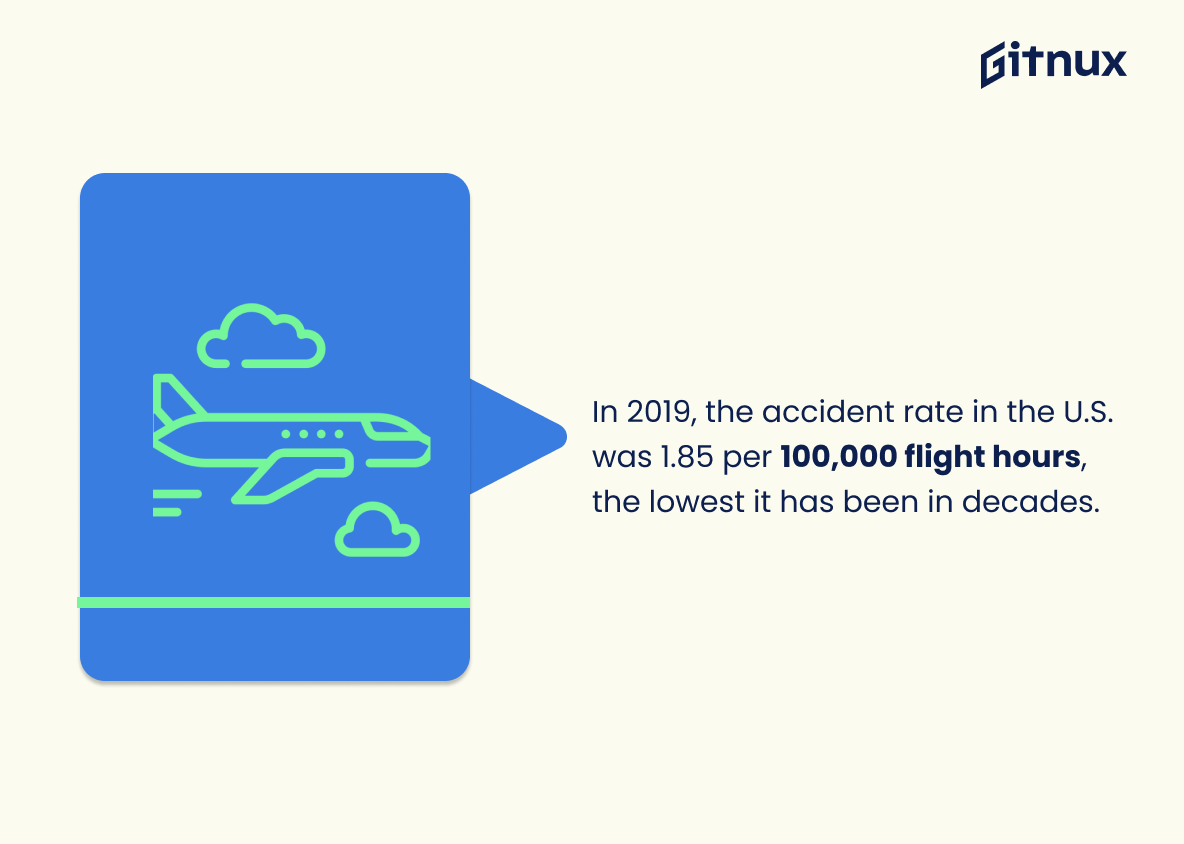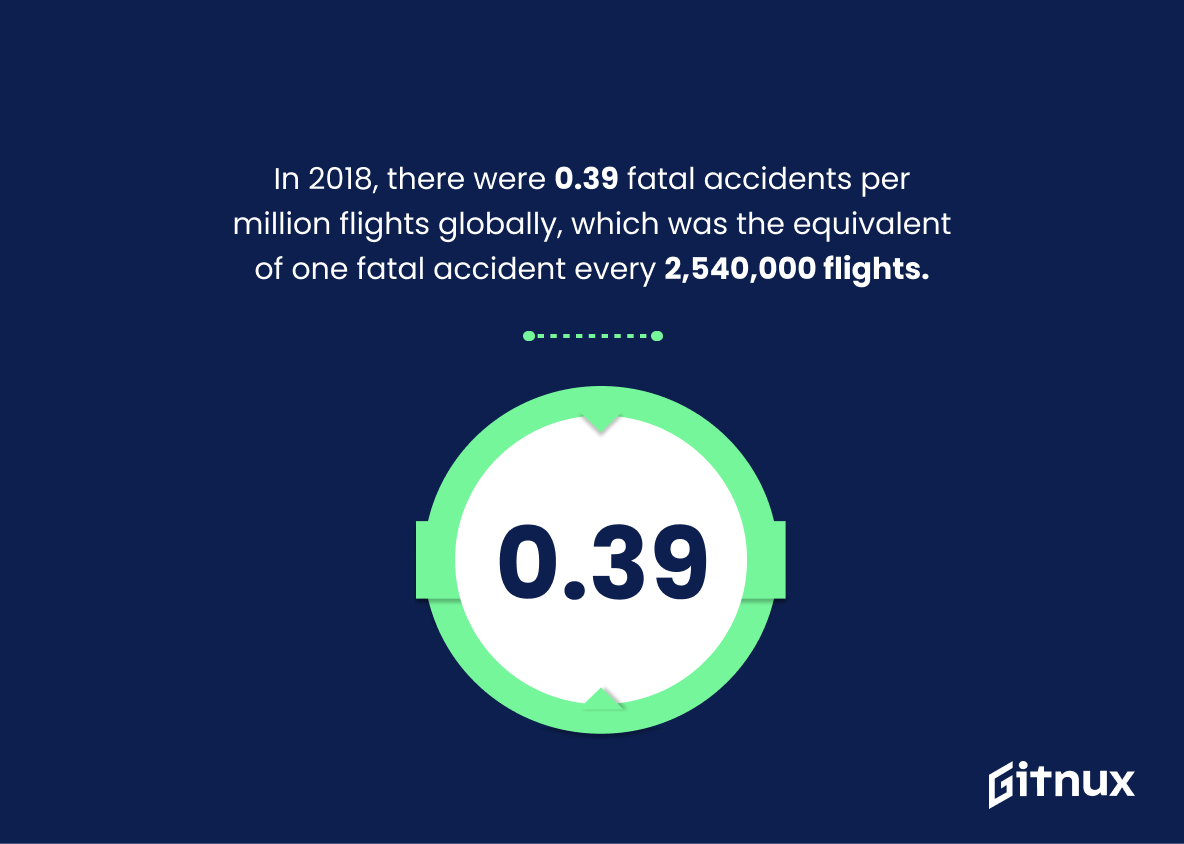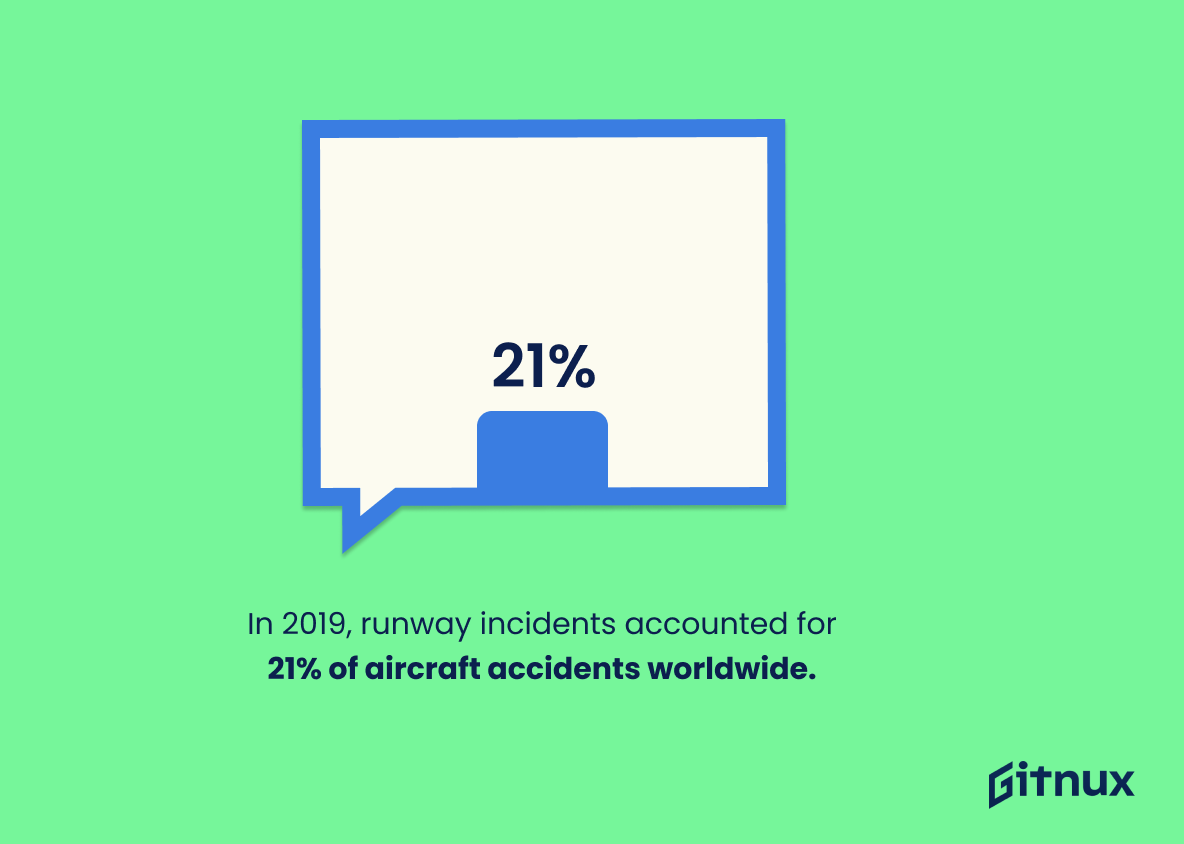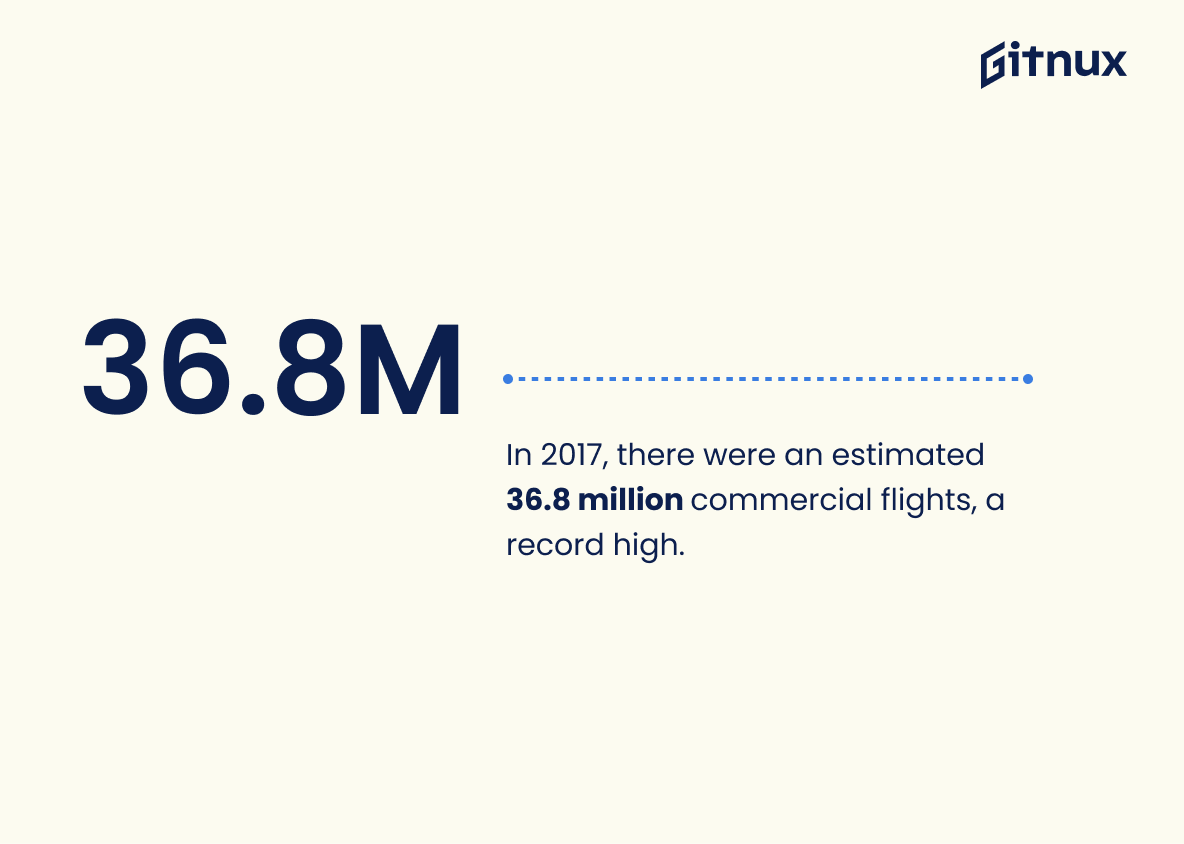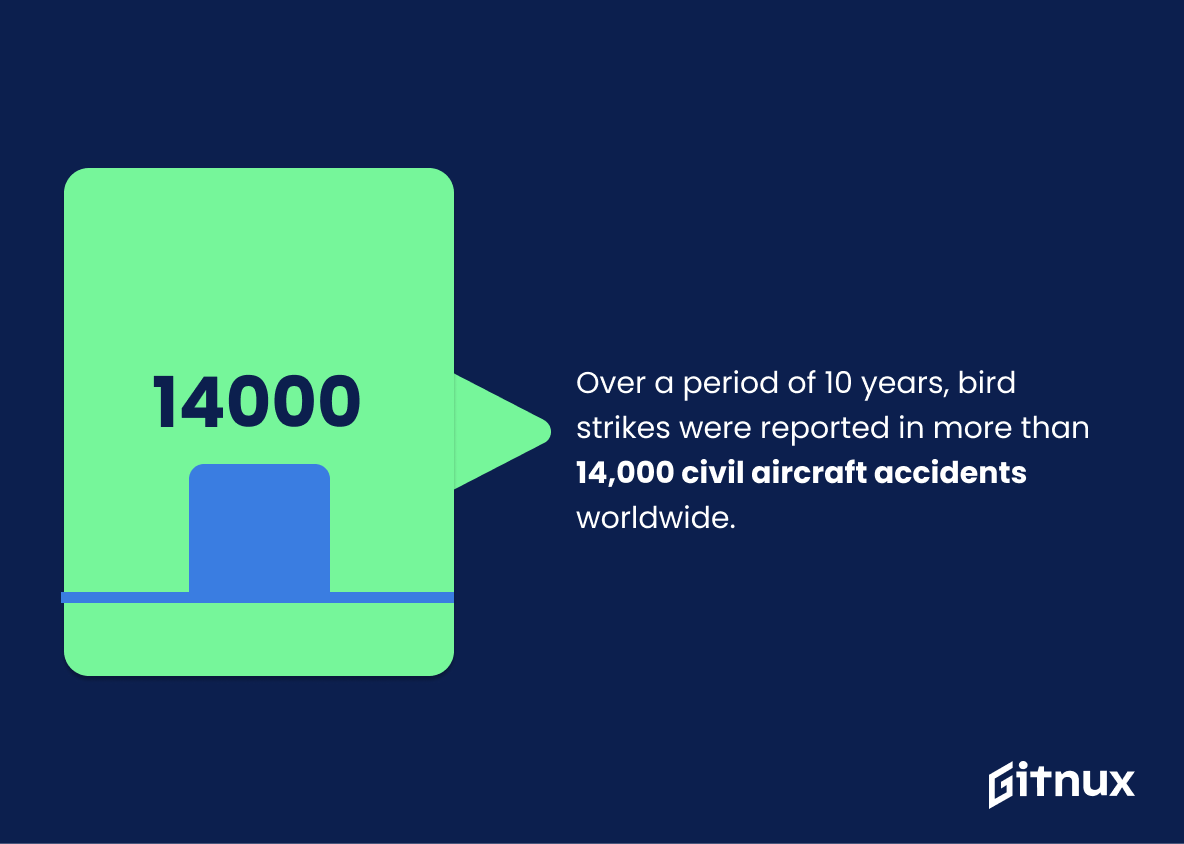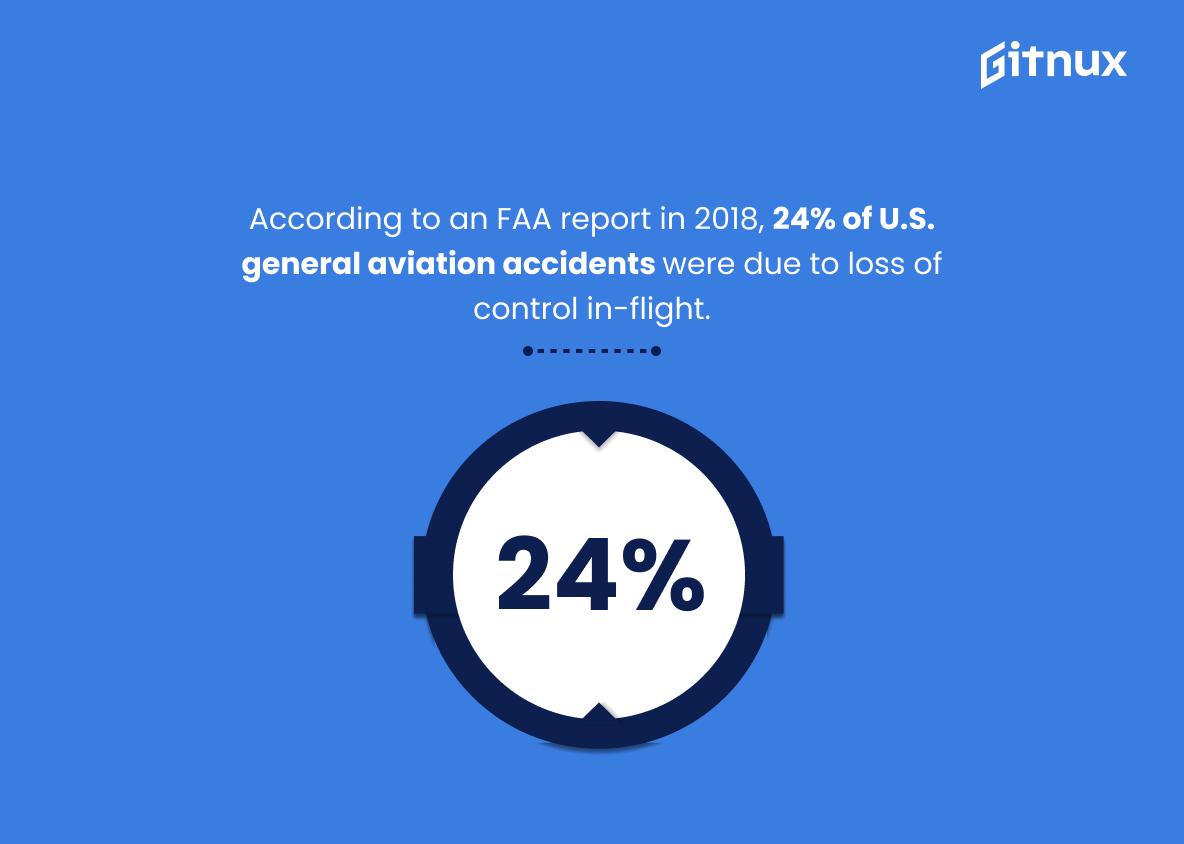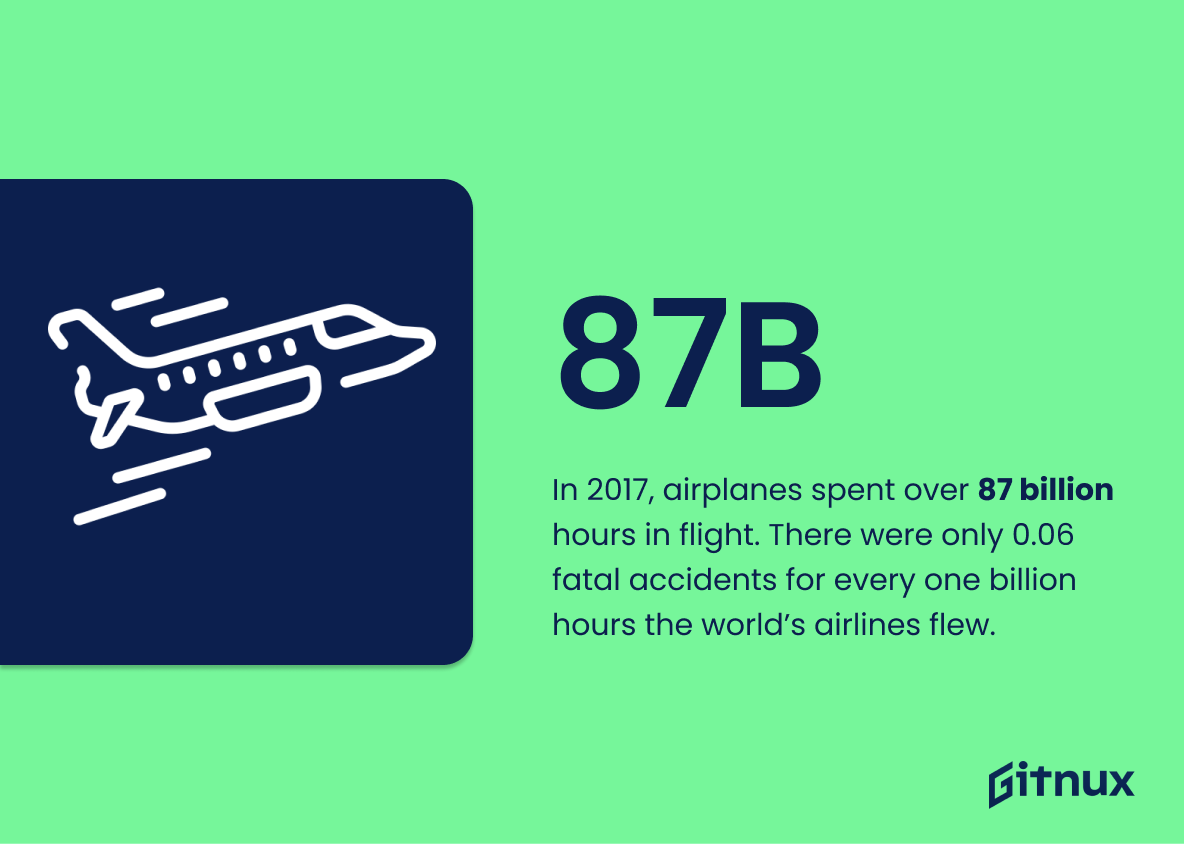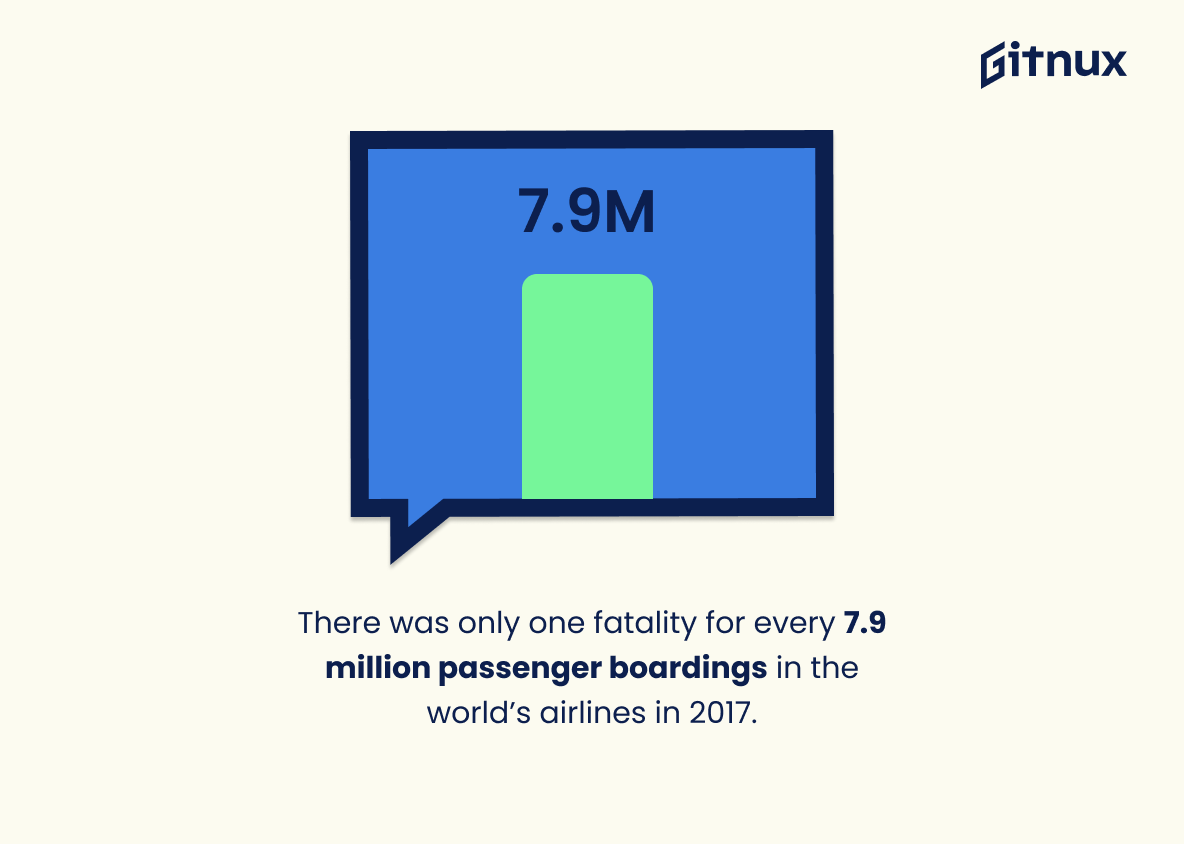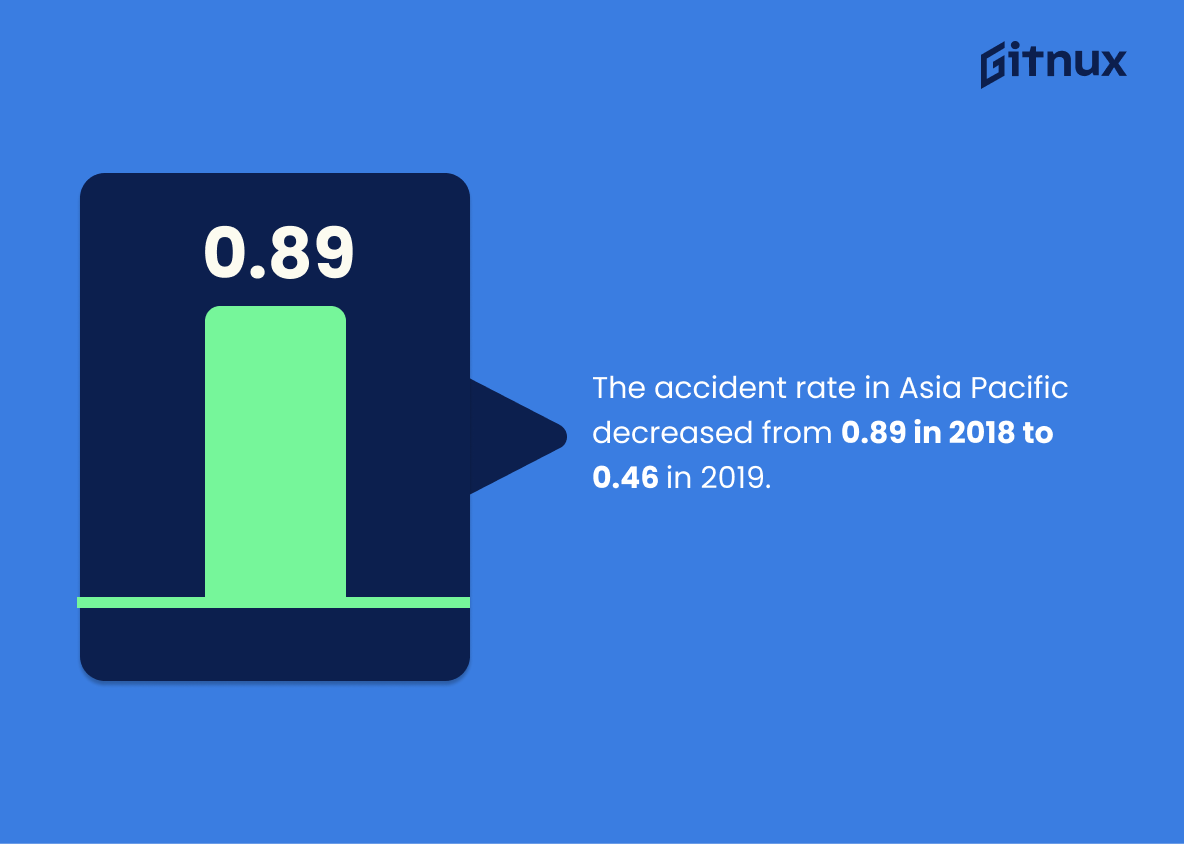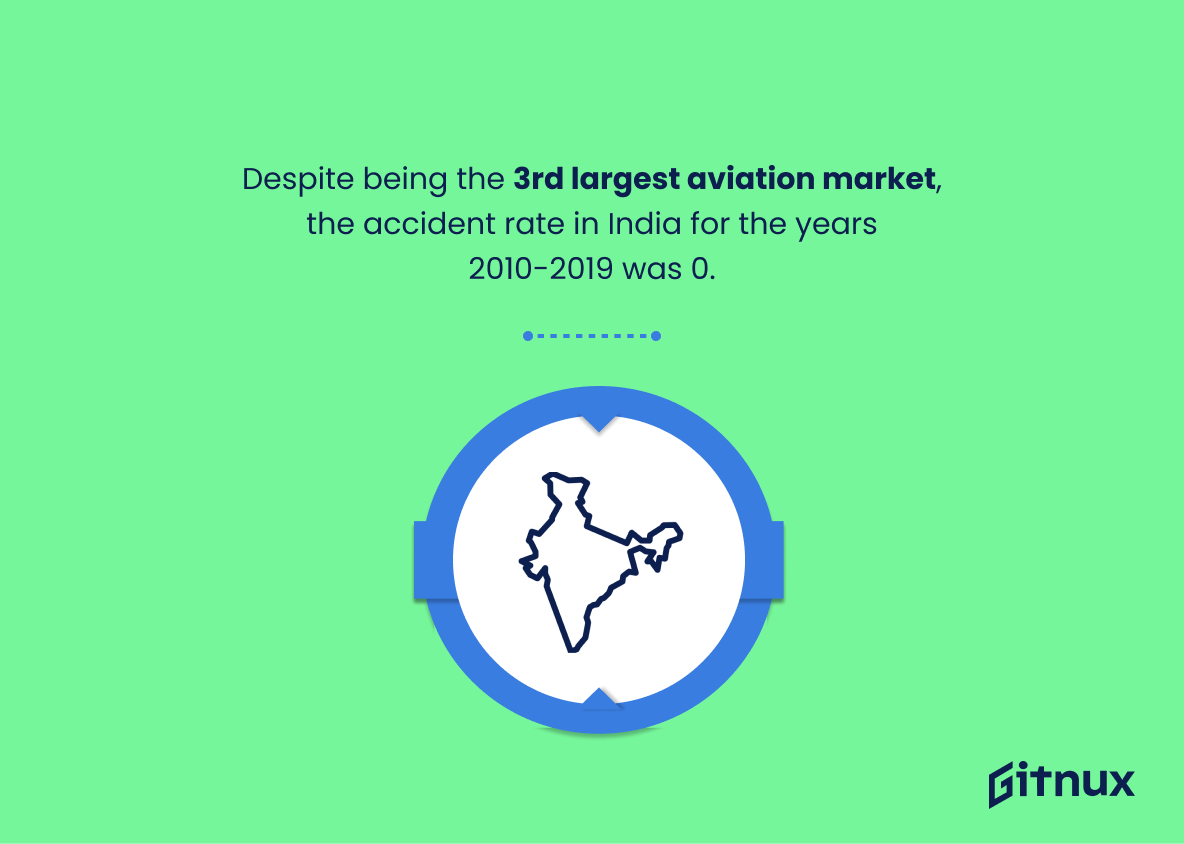Navigating the turbulent skies of airline data may seem daunting. As safety concerns play a pivotal role in the choosing of airlines by travelers, this pieces aims at providing an easy-to-understand breakdown of the facts and figures.
Join us as we embark on a journey through the complex world of airline safety statistics, revealing potential safety risks, analyzing safety performance over the years, and unmasking the safest airlines worldwide. Whether you’re a frequent flyer or a periodic passenger, this comprehensive guide will serve as your compass in determining the safest airlines to choose for your upcoming journeys.
The Latest Airline Safety Statistics Unveiled
In 2019, 86 accidents involving large commercial planes occurred worldwide, which was down from 160 accidents in 2018.
When we dive into the realm of airline safety, our flight path navigates through turbulent numbers of accidents involving large commercial planes worldwide. Glancing back at 2019, we find that our journey veers into a promising direction with a significant decrease in accidents compared to the previous year. As numbers descended from the daunting altitude of 160 accidents in 2018 to a much lower level of 86 in 2019, the statistic clearly outlines a reassuring trend in aviation safety.
With this data, one can appreciate the diligent efforts made to enhance safety measures, foster rigorous training, and advance technology in the aviation industry. Just as a pilot observes the horizon while piloting the aircraft, this statistic guides us in comprehending a broader perspective of airline safety progression.
Globally, 257 fatalities were due to accidents involving large commercial planes in 2019.
Highlighting the figure – 257 fatalities from accidents involving large commercial planes in 2019 – sheds light on the critical reality of aviation risks. The data is a stark testimony to the potential fatal adversity passengers globally might encounter. It underscores the urgency for relentless improvements in both safety regulations and risk management endeavors in the aviation industry.
It provides a quantifiable yardstick to measure risk and to identify areas of focus for increased safety. In essence, it’s a figure that breathes gravity into the discourse on Airline Safety Statistics, a stark numerical reminder of the human lives that depend on the commitment to aviation safety.
5-year average (2015-2019) global accident rate for all airline operations is 2.29.
In the vast realm of airline safety, the spotlight often falls on a critical number – the 5-year average (2015-2019) global accident rate for all airline operations, which stands at 2.29. This pivotal statistic has the rare ability to condense reams of historical data into an eloquent narrative about safety patterns over a significant period.
It paints a vivid image of the airline industry’s progression towards safer skies, a significant concern for travelers and experts alike, and a core focus of our blog post on Airline Safety Statistics. Thus, it merits our close attention and nuanced understanding as we delve further into the complex world of flight safety dynamics.
In 2019, the accident rate in the U.S. was 1.85 per 100,000 flight hours, the lowest it has been in decades.
In a world where air travel is becoming increasingly ubiquitous, evaluating safety metrics is vitally important. Take for instance the compelling figure from 2019, when the U.S. accident rate dropped to a noteworthy low of 1.85 per 100,000 flight hours. This significant drop, unprecedented in several decades, projects a powerful message about the focus and success of concerted efforts towards enhancing airlines safety.
While we often get swamped with voluminous data and statistics, what this amazing number does is paint a reassuring picture of air travel safety, offering comfort to air travelers while underscoring the dedicated work of those safeguarding our skies. Thus, in the sphere of Airline Safety Statistics, this data point stands out like a beacon, a testament to the industry’s unwavering commitment to safety improvements.
In 2018, there were 0.39 fatal accidents per million flights globally, which was the equivalent of one fatal accident every 2,540,000 flights.
Immersing ourselves into the world of airline safety statistics, one fact stands out with reverberating significance – in the year 2018, the planet witnessed a mere 0.39 fatal accidents for every million flights. Put into perspective, this equates to a startling one fatal mishap for every 2,540,000 ascents into the skies. These figures, while stark, paint a powerful picture, attesting to the extraordinary strides we’ve made in ensuring the safety of air travel.
They underline the effectiveness of stringent safety regulations and continuous improvement initiatives undertaken by airlines worldwide. Serving as a relevant barometer, reflection, and aid in comprehending the degree of air transport safety, these figures shape a compelling narrative that reassures millions of passengers of the relatively low risk attached to flitting across the globe in an aeroplane.
In 2017, there were no commercial passenger jet deaths anywhere in the world.
Emphasizing a year like 2017, when commercial passenger jet deaths were non-existent globally, offers an illuminating perspective into the efficacy of airline safety measures. This numerical information acts as a testament to the relentless efforts and technological advancements in crafting safer air travels.
It’s a compelling benchmark that inspires trust and confidence for passengers choosing to travel by air, reinforcing the idea that flying is one of the safest means of transportation. This remarkable statistic serves as an eloquent endorsement of airlines’ relentless commitment to safety, and the continued trend would undeniably enhance the allure of the azure skies to travelers.
In 2019, runway incidents accounted for 21% of aircraft accidents worldwide.
Straddling the realms of air travel, runway incidents crafted a noteworthy footprint, making up 21% of aircraft accidents globally in 2019. This figure serves as a pulsating beacon, illuminating the pressing need to enhance safety measures on the tarmac.
In the panoramic landscape of airline safety statistics, it highlights the critical importance of focusing resources not only on in-flight safety but on ground operations too. The multifaceted nature of airline accidents underscores the urgency to address the challenges within different stages of a flight’s process, from taxiing to takeoff and landing, ultimately fostering a holistic culture of safety in the world of aviation.
In 2017, there were an estimated 36.8 million commercial flights, a record high.
The surge in the number of commercial flights to 36.8 million in 2017 illuminates the intensifying relevance of airline safety. This historic zenith not simply increases the population at risk, it also multiplies the occasions for potential breaches in safety to occur. In the grand tapestry of airline safety statistics, each flight represents an additional thread, with every departure and landing carrying its own distinct probability of success or mishap.
Thus, this monumental increase in flights underscores the cruciality of consistent safety upgrades and rigorous pre-flight checks to maintain the sterling safety record that airlines, passengers, and the public at large have come to heavily rely upon.
Over a period of 10 years, bird strikes were reported in more than 14,000 civil aircraft accidents worldwide.
In the panorama of airline safety, the data presenting more than 14,000 incidences of bird strikes globally, within a decade, is a noteworthy gem. It shifts the spotlight on a less-considered yet essential factor contributing to the aviation risks and accidents, reminiscent of the unfathomable complexity of air travel safety.
This statistic emphasizes the urgent need for innovative avian-deterrent strategies, perhaps even bird-smart flight systems, to significantly enhance the safety quotient in civil aviation. It brings home the simple yet profound truth that when it comes to airline safety, both human factors and Mother Nature play a critical role. Delving into this statistic, one cannot help but envision a safer sky where man-made wings and nature’s aviators coexist without conflict.
According to an FAA report in 2018, 24% of U.S. general aviation accidents were due to loss of control in-flight.
Highlighting this FAA statistic brings to focus the critical concern of in-flight control loss, which accounted for almost a quarter of U.S. general aviation accidents in 2018. This piece of data serves as a stark alarm, compelling both the airlines and the safety authorities to prioritize control-related safety measures.
In the quest for safer skies, it underscores the necessity for continual crew training and technological enhancements to minimize such incidents. Drawing attention to this percentage grants readers a better understanding about real-world aviation risks, fostering a heightened sense of awareness about this significant safety issue.
In 2017, airplanes spent over 87 billion hours in flight. There were only 0.06 fatal accidents for every one billion hours the world’s airlines flew.
Painting a vivid image of airline safety, the statistic allows us to grasp the tremendous scale of airline activity versus the infinitesimal occurrence of fatal accidents. In 2017 alone, the world’s airlines collectively clocked a staggering 87 billion flight hours. Meanwhile, the frequency of fatal mishaps was remarkably low- a mere 0.06 for every billion hours flown.
This astonishing contrast strikingly encapsulates the high level of safety that underpins global aviation. As a beacon of reassuring data, it supports the blog post in the quest to alleviate public concerns about flying, and reiterates the commitment of the airline industry to safety standards.
There was only one fatality for every 7.9 million passenger boardings in the world’s airlines in 2017.
By peering through the lens of the eye-opening comparison “one fatality for every 7.9 million passenger boardings in 2017”, it becomes evident that air travel presents as a highly safe mode of transportation. Nestled within the heart of a blog post about Airline Safety Statistics, this fact serves as a powerful testament to the rigorous safety protocols implemented by airlines globally.
This metric, shaped by continuous improvements driven by engineering innovations, relentless security measures, and strict regulations, illuminates the rarity of fatal incidents in the landscape of aviation. Thus, it becomes a beacon of reassurance for readers, demystifying fears and misconceptions linked to the risk of flying, thereby confirming that the miracle of human flight is not just awe-inspiring, but also remarkably safe.
Every day, U.S. airlines transport more than 2.3 million passengers and more than 55,000 tons of cargo.
Painting a vivid picture, imagine the bustling activities that occur in U.S. airlines daily – over 2.3 million passengers jostling their way on various flights and more than 55,000 tons of cargo being meticulously loaded. This bustling scenario underscores the magnitude of operations that go on daily within the U.S. airline industry which, in turn, places a spotlight on the immense responsibility shouldered by airline operators.
Each passenger and every ton of cargo represent a commitment to safety that airlines must fulfill. Drilling down to every flight, every pilot and crew member, and each aircraft, there lies the vibrant pulse of safety measures at play in this industry. Therefore, appreciating this statistic is akin to understanding the pivotal role of safety in the massive daily undertakings of the U.S. airlines.
The accident rate in Asia Pacific decreased from 0.89 in 2018 to 0.46 in 2019.
Highlighting this remarkable decrease in accident rate, the statistics paint a clear picture of enhanced aviation safety in the Asia Pacific region. More than just numbers, it marks an improvement journey, signaling stronger regulatory regimes, better engineered safety strategies and more proficient pilot training. Such positive swing reverberates confidence not only among airlines and their staff, but significantly uplifts passenger sentiments, setting higher safety benchmarks for the aviation industry.
Further, it encourages the ongoing commitment to zeroing accident rates, fostering a culture of ceaseless safety improvement and excellence. This reduction is a beacon of advancements made, testifying to the efficacy of safety measures adopted. It’s not just a statistic for the annual report, but a measurable reflection of a safer sky in the Asia Pacific.
Despite being the 3rd largest aviation market, the accident rate in India for the years 2010-2019 was 0.
Swathed in the fascinating tapestry of airline safety statistics, an emblem of remarkable feat emerges, telling the inspiring narrative of India. Commanding the 3rd position in the global aviation market, the country has steered clear of air accidents for nearly a decade (2010-2019).
The absence of any accident during this period is not only statistically significant, but also an acknowledgement of their strict safety standards and rigorous aviation regulations. For anyone navigating the skies, this statistic provides a reassuring testament to India’s commitment towards ensuring that every take-off is followed by a safe landing.
The risk of being killed in a plane crash for the average American is 1 in 11 million.
Considering the axiom “numbers never lie”, the statistic accentuates an incredibly fascinating aspect – the exceedingly low probability of facing death due to a plane crash for an average American. It is vitally important for a blog post on Airline Safety Statistics as it presents a vibrant contrast to common perceptions about air travel. It aids in dispelling fears around airline accidents, supporting the idea that flying is, in fact, among the safest modes of transportation.
This concrete figure – 1 in 11 million – serves as an impressive assurance for passengers, demonstrating palpably that their safety is not taken lightly by the airline industry. This consideration of probabilities leads to nuanced discussions on safety measures, regulations, and their effectiveness within the industry, making it a focal point of exploration in any profound discourse about airline safety.
Boeing’s 737 Max has been involved in two fatal crashes resulting in 346 deaths.
Delving into the realm of Airline Safety Statistics, the alarming incident of Boeing’s 737 Max being associated with two devastating crashes, resulting in the tragic loss of 346 innocent lives, stands as a stark reminder of the implicit risk involved in air travel. It thrusts the spotlight onto the importance of stringent safety measures, rigorous checks, and regular upkeep of aircrafts.
This striking statistic serves to underline the critical deterrent it can be in the aviation industry, potentially affecting passenger confidence and demand, while also influencing scrutiny levels from authorities and policymakers globally. It further amplifies the urgency for continuous advancements in safety protocols and technologies, thus making it a focal point in discussions relating to airline safety statistics.
In the decade from 2008 to 2017, there was an annual average of 14 fatal accidents and 480 fatalities worldwide.
Digging into the realm of Airline Safety Statistics, an intriguing insight unfolds. Between 2008 and 2017, it was observed that there were, on average, 14 fatal accidents resulting in 480 fatalities globally every year. Viewing these figures through the lens of safety analysis, it breathes life into the silent narrative of risk associated with flying.
On one hand, these figures underline the ominous possibility of fatal incidents, fostering the necessity for continual safety improvements. Conversely, they also cast a light on the bigger picture – that despite high-profile disasters, air travel remains remarkably safe, especially when considering the vast number of flights occurring daily. These statistics serve as a compass, guiding critical discussions, shaping policies and enabling strategic decisions aimed at minimizing future air tragedies. They’re not just dry numbers, but poignant reminders of lives lost and saved, shaping the ongoing journey towards an ever safer sky.
Conclusion
Airline travel, despite the occasional high-profile incident, remains one of the safest modes of transportation. Statistically, your chances of being in an airline accident are astronomically low. Credit goes to robust regulatory bodies, continual advancements in aviation technology, stringent safety protocols, and top-notch training for flight crews.
Ultimately, for a worry-free journey, choosing a reputed airline with a solid safety record can enhance your peace of mind. So, as you buckle in for your next flight, you can rest assured that you are participating in a journey that has been meticulously planned and executed for maximum security and safety.
References
0. – https://www.www.airlines.org
1. – https://www.www.birdstrikecontrol.com
2. – https://www.www.iata.org
3. – https://www.www.nytimes.com
4. – https://www.www.faa.gov
5. – https://www.www.ntsb.gov
6. – https://www.www.internationalairportreview.com
7. – https://www.edition.cnn.com
8. – https://www.www.businessinsider.com
9. – https://www.www.icao.int
10. – https://www.www.planecrashinfo.com


